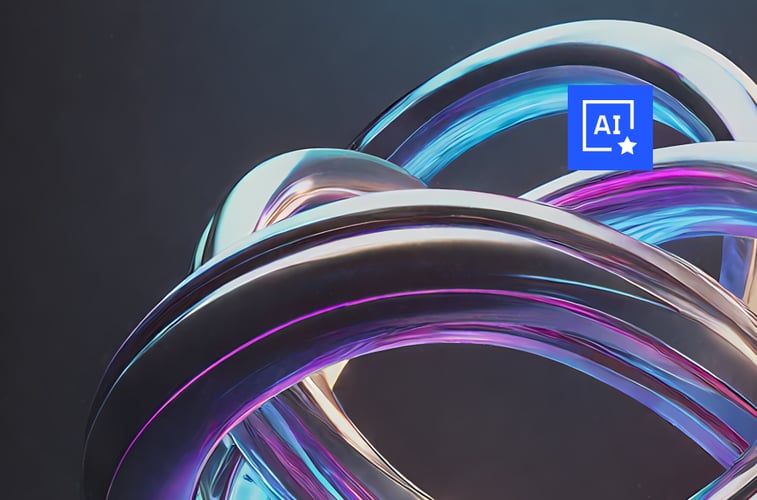Maximising conversions is the ultimate goal of digital advertising. But as we move into an ever more technologically advanced, AI-driven world, it's actually one of the most established marketing principles – the funnel - that can help to unlock success in digital advertising.
The marketing funnel refers to the complex and multifaceted journey a customer goes through from the first time they hear about a product or service until they make a purchase. The wide end of the funnel is focused on the broadest number of prospects and narrows down to the fewer number that eventually purchase.
An advertising funnel takes the marketing funnel's principles and applies them to digital advertising campaigns. An ad funnel has multiple touch points at each stage, so no matter where users are in their journey, they'll be able to see an ad relevant to them.
The beauty of digital advertising is that it enables you to test and learn, see what works and what doesn't, and do this at scale and speed. Following a funnel process of generic through to specific content, you can narrow into conversion or acquisition with dramatic efficiency. And many of the major platforms – Facebook, LinkedIn, etc. - offer the ability for advertisers to use an ad funnel to maximise conversions.
In today's post-cookie digital advertising landscape and ever-evolving platform algorithms, the ad funnel offers a more efficient and effective way to target your audience and drive conversions.
So let's look at the different stages of the ad funnel.
Phase 1 – Driving awareness with a cold audience
The first phase of the ad funnel aims to create awareness among a cold target audience. Branded thought leadership can highlight potential challenges and pain points that need solving to capture the interest of potential customers. Activity is focused on identifying interested parties, using a range of awareness-level ads that address key audience pain points. The cornerstone of this phase is not just to find prospects but also to refine them into a new audience segment for the later funnel phases.
Commonly, video ads serve as the primary medium for this stage due to their wider reach and the ability to track user engagement based on video watch time. Static ads can also be used to direct the audience to company pages, in-platform articles, and instant experiences.
How a B2B brand drives awareness
A brand awareness campaign on LinkedIn for a stainless-steel manufacturer would showcase compelling real-life use cases for their industry-grade solutions highlighting how they solved the target persona problem. This would establish the brand as reliable, with solutions that meet target audience challenges.
How a B2C brand drives awareness
An eCommerce company selling environmentally friendly clothing launches a video ad campaign on Meta, showcasing sustainable features and consumer benefits. The video, rich in visual cues, resonates with an audience that cares about the environment and wants to make responsible shopping choices.
Phase 2 – Building interest with a warmer audience
In the interest phase, the goal is to deepen the relationship with your audience by presenting relevant and engaging content. This phase of the funnel centers on kindling interest among an audience that reacted to your first ad. Ad formats such as video, single image, and carousels direct prospects to read an in-depth article or engage with in-platform content to understand more about the topic of interest.
How a B2B brand builds interest
The stainless-steel manufacturer uses LinkedIn and Google ads to distribute a series of articles that further explore the topic and case studies that address key industry challenges. Each piece of content highlights how specific features of their products address these challenges.
How a B2C brand builds interest
The e-commerce clothing retailer deploys an Instant Experience via Meta ads, demonstrating their different styles, thereby stoking interest among the target audience.
Phase 3 – Moving to consideration and conversion
This phase moves an interested audience to leads (B2B) or paying customers (B2C). Using ad retargeting based on previous interactions, the audience is guided down the ad funnel toward the point of conversion. Advertisers in this phase typically use lead-generation ads on LinkedIn and Meta for B2B and shopping ads on Meta and Google for B2C.
How a B2B brand moves into consideration
The stainless-steel manufacturer uses LinkedIn Lead Generation Ads to promote a webinar on trends in sustainable stainless-steel production. Alternatively, they could use a high-value case study detailing how they helped a client improve project turnaround time. These assets help establish strong credentials and allow it to collect contact information for activity in the next phase.
How a B2C brand moves to consideration and conversion
The clothing retailer uses Meta or Google Shopping ads for retargeting key audiences: people that interacted with their experience or ads, visitors to the website, and other customer audiences (based on shopping platform, CRM, etc., first-party data). The ads entice them to purchase through a time-limited offer.
Phase 4 - Nurturing conversion and lifetime value
In this phase, the leads generated in the platform are automatically transitioned into an automated campaign via CRM integration. On the B2B side, the objective is to nurture marketing qualified leads (MQLs) to sales qualified leads (SQLs). On the B2C side, the focus is on customer retention and loyalty. This process is typically carried out on a marketing automation platform, using email messages as the primary form of communication. Alternatively, an SMS tool can be used to engage with the leads across multiple channels.
How a B2B brand nurtures conversion
The stainless-steel manufacturer's leads are pushed into an automated marketing register. This will be used to sequence and serve future communications. These nurture emails are designed to provide further value to the prospects and help them transition from MQLs to SQLs.
How a B2C brand nurtures lifetime value
The clothing retailer, meanwhile, could, for example, roll out an email campaign providing styling tips for recently purchased items alongside exclusive discounts on complementary items, fostering repeat purchases and customer loyalty.
An ad funnel approach to digital advertising is a strategic and cost-effective method for generating conversions. It's particularly effective on platforms offering lead-generation and shopping ad formats. In summary, these are the key advantages of using an ad funnel:
- Improved Prospect Quality: The ad funnel approach progressively refines your audience, leading to higher-quality prospects that are more likely to convert.
- Higher Conversion Rates: By addressing audiences needs and concerns at each phase, you increase the likelihood of conversion in the final phase.
- Efficient Budget Utilization: By focusing on the prospects that are most likely to convert, businesses can reduce ad spend on less interested audiences, leading to improved ROI. The longer this is done, the better and more cost-effective the targeting becomes in future campaigns.
- Customer Retention: By continually providing value and maintaining customer engagement, businesses can boost customer retention and increase lifetime value.
- Insightful Analytics: The phased approach of an ad funnel offers valuable insights into customer behavior at each stage, from awareness to conversion.
- Scalability: Ad funnels can be scaled up or down, enabling marketers to find the best approach for their specific business needs.
To find out how an advertising funnel help drive conversions and lifetime value for your company, talk with Luxid's Digital Marketing experts.










